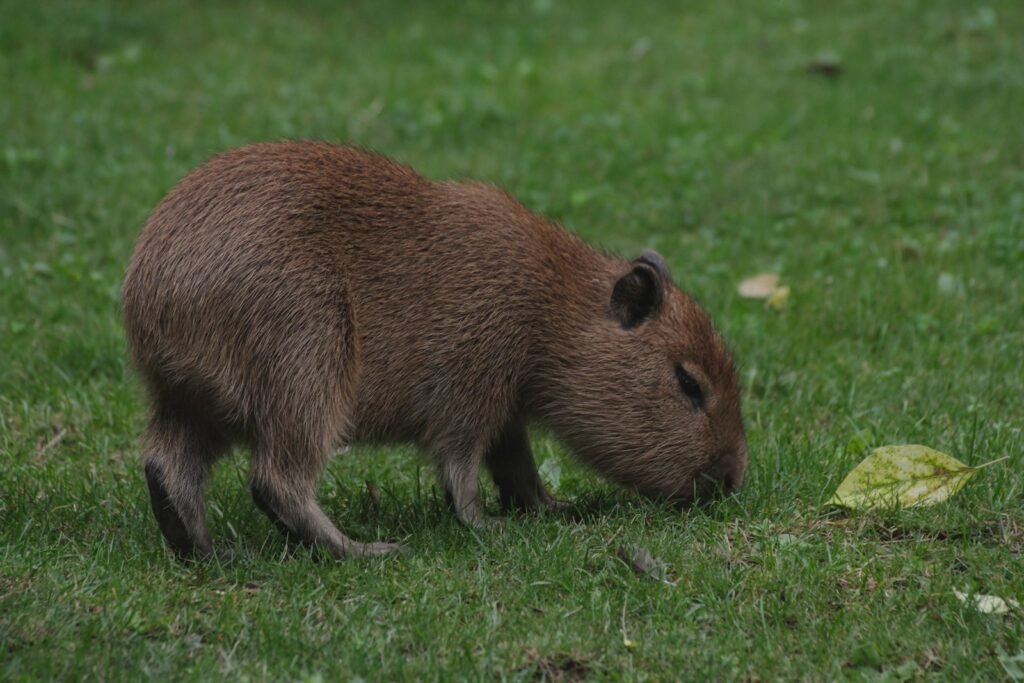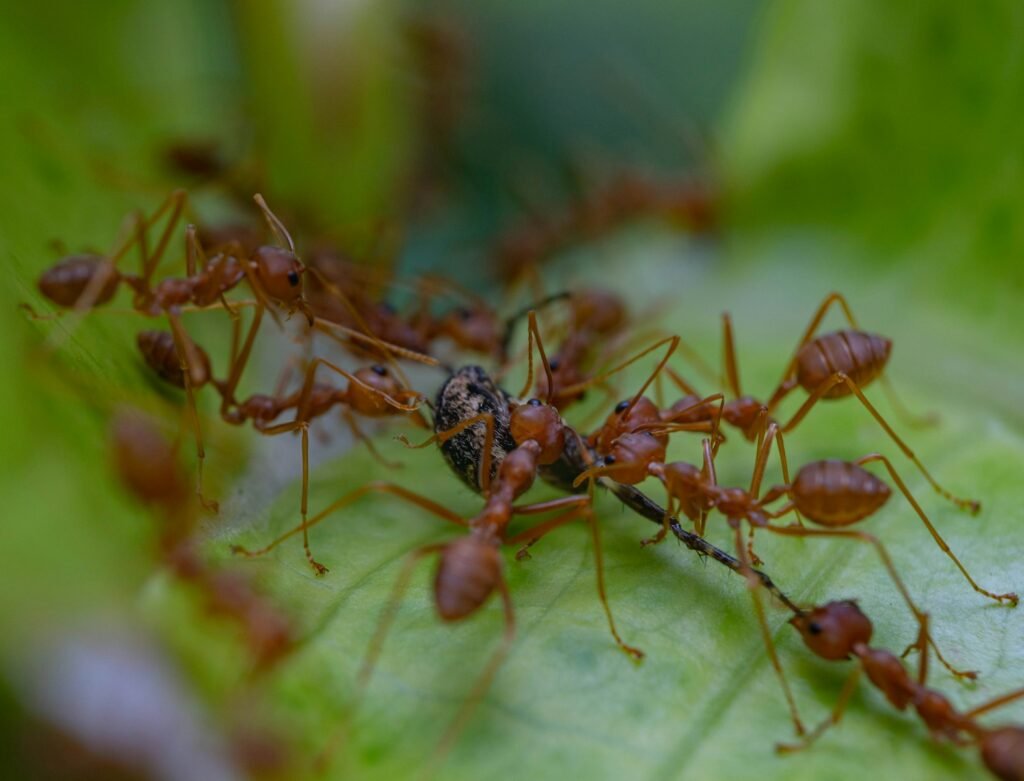The internet crowned the capybara a symbol of serenity, but scientists have been asking a sharper question: what, exactly, makes the world’s largest rodent so unflappable? Across South American wetlands and increasingly in city parks, researchers are uncovering a web of biological and social traits that add up to uncommon calm. It’s not a meme; it’s a survival strategy shaped by water, grass, and group living. As climate swings reshape rivers and heat waves push animals into new spaces, the capybara’s cool might be more than charming – it could be instructive. Understanding their serenity could help cities manage wildlife conflicts and help conservationists design wetlands where both people and animals can breathe easier.
The Hidden Clues
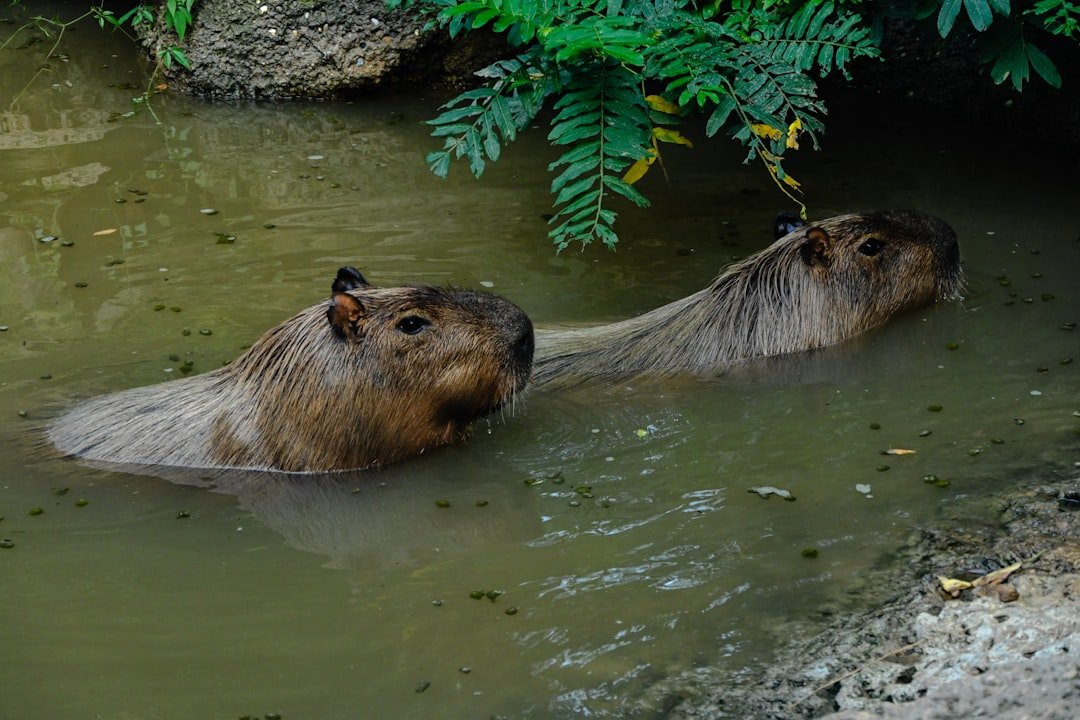
Let’s start with a puzzle: why do so many species tolerate capybaras at close range, from birds hitching rides to crocodilians basking nearby? Part of the answer is simple physics and posture – capybaras keep their heads high and movements slow, broadcasting that they’re not a threat. Their eyes, ears, and nostrils sit along the skull’s top ridge, so they can survey while half-submerged, staying watchful without thrashing the water.
That calm-looking loaf on the riverbank hides a flexible behavior set. When startled, capybaras can sprint and dive, but they prefer steady, energy-saving choices that don’t escalate tension. Over time, neighbors learn that pattern, and the whole wetland relaxes a notch. What looks like chill is actually finely tuned risk management.
Built for Calm: Biology of a Semi-Aquatic Giant

Capybaras are built like amphibious ottomans: dense bodies, partially webbed feet, and skin that benefits from frequent soaks. Water does double duty by cooling them and providing an instant escape route, which reduces the need for constant vigilance. When you always have a door to slip through, you don’t pace the room.
Inside, they’re efficient grazers and classic hindgut fermenters, relying on a large cecum to extract nutrients from tough grasses. They even practice cecotrophy – re-ingesting special droppings to recover vitamins – which extends energy without frantic foraging. Lower metabolic pressure equals fewer risky sprints and fewer panicked confrontations. Physiological thrift, meet behavioral poise.
The Social Equation
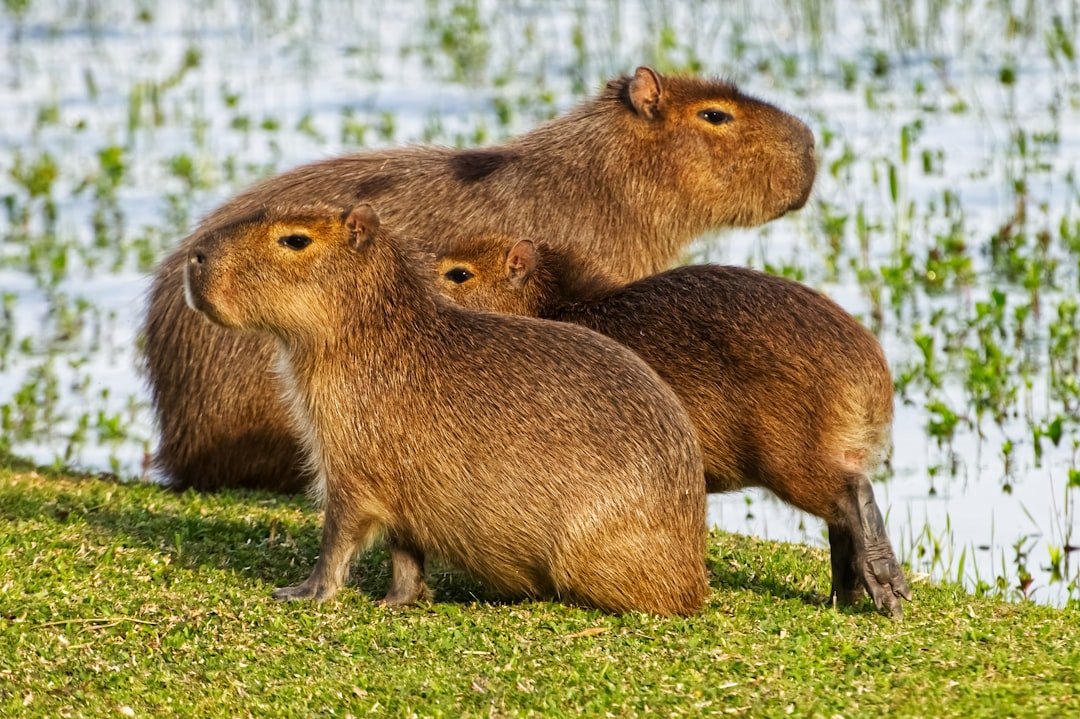
Serenity scales with friendship in capybara society. They live in stable groups that often include a dominant male, several females, young, and subordinate males, creating a web of allies and babysitters. Shared vigilance means each individual scans less, freeing time for resting, grazing, and grooming.
Their soundscape is surprisingly rich: soft purrs, sharp barks, and chirping contact calls stitch the group together and settle disputes early. Frequent social grooming lowers tension and reinforces bonds that would otherwise fray under dry-season stress. In short, they’ve turned community into a stress buffer – and you can almost hear the pressure hiss out.
From Ancient Tools to Modern Science

For years, researchers relied on field notes, spoor, and the occasional radio collar to understand capybaras. Now the toolkit includes GPS tags, accelerometers, and passive acoustic recorders that map movements, rest bouts, and vocal networks in exquisite detail. Noninvasive fecal sampling offers windows into diet and stress physiology without trapping or handling.
I once spent an afternoon with a biologist who could chart a group’s social map just from call patterns drifting across a marsh. That fieldcraft now pairs with machine learning that spots subtle behavior shifts – like the difference between a wary pause and a contented loaf. The result is a clearer, kinder science that sees calm not as cute, but as data.
Why It Matters

Capybara composure isn’t just heartwarming; it’s a lesson in conflict prevention. Compared with species that rely on intimidation or speed, capybaras lean on predictability, space-sharing, and early-warning calls to defuse trouble. Those strategies mirror best practices in human-wildlife management, where routine and clear signals reduce clashes.
There’s also a public-health footnote worth hearing: in some regions, capybaras host ticks that can carry pathogens, which means monitoring their movements matters for local risk maps. Balanced research helps towns design trails, mowing schedules, and dog-leash rules that keep encounters calm and safe. Their chill is not a license for carelessness; it’s a blueprint for coexistence with eyes open.
Global Perspectives

Across Brazil, Uruguay, and Argentina, capybaras now navigate golf courses, canal edges, and urban greenways with notable grace. In Brazilian cities, families picnic as groups of capybaras graze nearby, a scene that would be unthinkable with more skittish or aggressive species. The animals’ predictability turns potential flashpoints into quiet routines.
Elsewhere, the picture changes with context – dry-season crowding can push groups into farm fields, testing patience when lawns and crops become salad bars. Managers juggle fencing, habitat restoration, and community messaging to steer animals back to water corridors. The lesson is consistent: when wetlands are intact and pathways are clear, calm behavior has room to breathe.
The Future Landscape
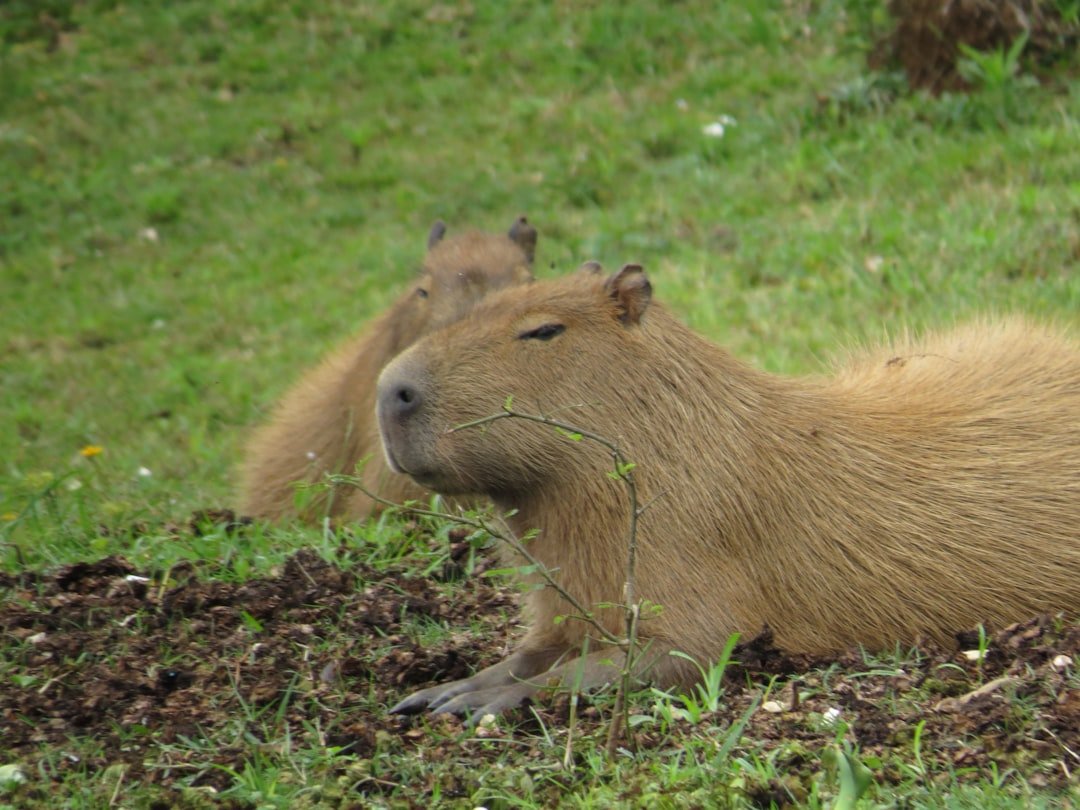
Climate change is already redrawing the capybara map. Longer heat waves drive more daytime soaking and nocturnal foraging, while erratic rainfall can compress animals into the last green patches, increasing the odds of human encounters. Dams, levees, and canals edit river rhythms, sometimes stranding groups away from safe refuge.
On the tech side, lightweight bio-loggers, drone thermal imaging, and environmental DNA sampling are converging to track populations with minimal disturbance. AI can parse chorus calls to flag stress hotspots before conflicts boil over. The next leap is stitching these streams into live dashboards for park managers – a calm-indicator for cities that want to stay ahead of the curve.
The Hidden Clues, Revisited: Health and Hygiene
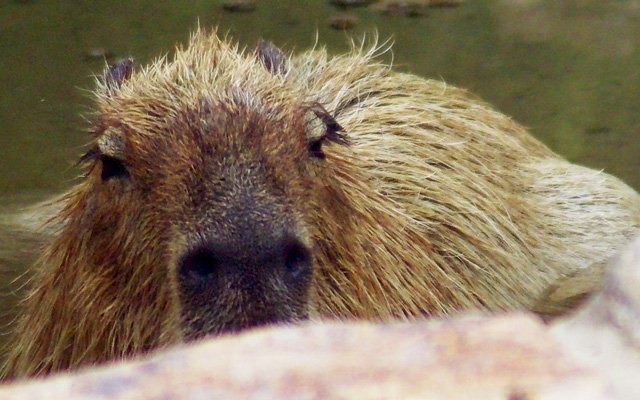
Water isn’t just a chill-out zone; it’s hygiene, thermoregulation, and social space in one shimmering package. Regular soaking helps skin health and shaves off heat that would otherwise spike stress. Sandbanks and mud allow lounging without constant exposure.
Diet is the other half of the equation: high-fiber grasses and aquatic plants keep mouths busy and bellies steady, reducing the hunger-driven edge that fuels many animal conflicts. Group childcare spreads the workload so nursing females aren’t perpetually exhausted. When basic needs are reliably met, calm ceases to be a luxury and becomes the default.
Living With Capybaras: Ethics and Care

As their fame grows, so do attempts to keep capybaras as pets – a trend that clashes with their deep need for water access, space, and same-species companionship. Laws vary widely, and in many places private ownership is restricted or prohibited for good reasons. A backyard tub can’t substitute for a wetland, and loneliness can fray even the chillest temperament.
Responsible interaction means observing at a respectful distance, never feeding wildlife, and securing dogs near water edges. Urban planners can help by linking ponds, restoring riparian grasses, and designing quiet refuge zones within parks. The payoff is a city that feels a little more like a marsh – and behaves better for it.
Conclusion

If capybaras teach one thing, it’s that calm is built, not wished into being. Support local wetland restorations, citizen-science surveys, and research groups that use noninvasive monitoring to map stress and movement. Ask park departments to connect water corridors and install signage that sets clear expectations for people and pets.
Share the science behind the memes so admiration turns into stewardship. And next time you see a loafing capybara, consider the architecture beneath that ease – water at the ready, friends nearby, routine intact. What would it take to build that kind of calm where you live?

Suhail Ahmed is a passionate digital professional and nature enthusiast with over 8 years of experience in content strategy, SEO, web development, and digital operations. Alongside his freelance journey, Suhail actively contributes to nature and wildlife platforms like Discover Wildlife, where he channels his curiosity for the planet into engaging, educational storytelling.
With a strong background in managing digital ecosystems — from ecommerce stores and WordPress websites to social media and automation — Suhail merges technical precision with creative insight. His content reflects a rare balance: SEO-friendly yet deeply human, data-informed yet emotionally resonant.
Driven by a love for discovery and storytelling, Suhail believes in using digital platforms to amplify causes that matter — especially those protecting Earth’s biodiversity and inspiring sustainable living. Whether he’s managing online projects or crafting wildlife content, his goal remains the same: to inform, inspire, and leave a positive digital footprint.

